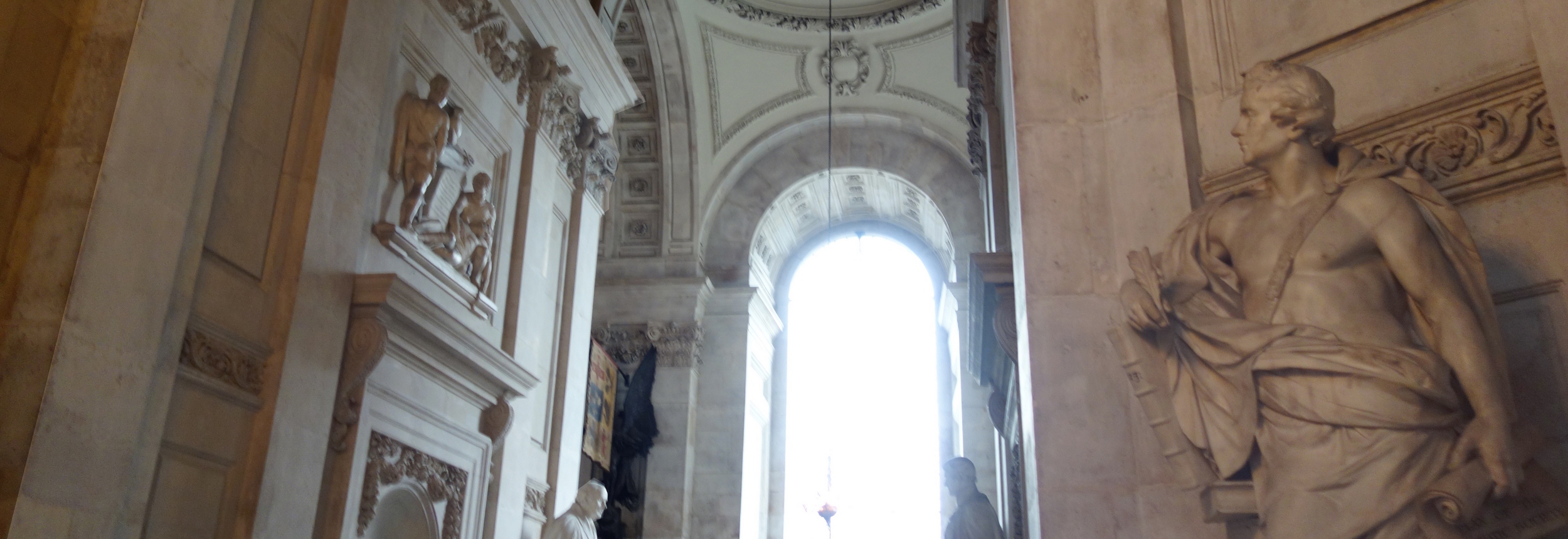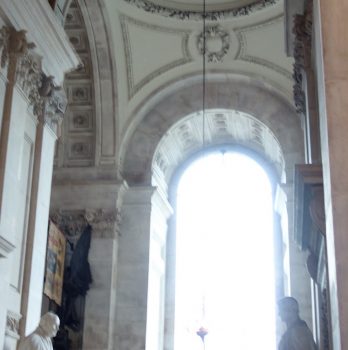Pantheons: Sculpture at St Paul’s Cathedral, c.1796-1916
Public monuments have an increasingly contested presence in contemporary Britain and across the former British empire, in the wake of the Black Lives Matter and Rhodes Must Fall movements. Pantheons: Sculpture at St Paul’s Cathedral, c.1796-1916 is a three-year, AHRC-funded project, exploring one of the largest, but least well-known, state-sponsored artistic projects in British history, featuring some of the most significant individuals in Britain and across its former empire in the long nineteenth century.
Background
The project, launched in October 2019, is a partnership between the Department of History of Art at the University of York and St Paul’s Cathedral, that returns to centre stage the unparalleled and unprecedented collection of monuments in one of England’s most iconic and significant buildings, and one of the top-20 most-visited sites in the UK. The project will focus upon the more than 300 monuments erected in the cathedral from the first quartet, in the midst of the French Revolutionary and Napoleonic wars in 1795, to the outbreak of the First World War, in order to understand the precise role the pantheon played in British, European and Imperial history and art history in the long 19th nineteenth century, and how the pantheon transformed its ecclesiastical environment and was inflected by its distinctive cathedral surroundings. As a result, the project seeks to communicate the pantheon’s complex, contestable value to a diverse, multicultural audience in the 21st century.
Aims
Starting from close analyses of the monuments themselves, in all of their detail, material, and three-dimensional complexity, the project seeks to increase significantly the range of visual, archival and conceptual sources brought into relation with the monuments, and particularly the less well-known post-Napoleonic examples, in order to provide richer and more complex art historical interpretations of the monuments, through sustained engagement with the sculptures themselves, in their particular and changing spaces, across time.
Outcomes
The project will fund new colour photography of the entire pantheon and short films of the thirteen most significant monuments, as well as a host of digital humanities resources, which will all be available open-access to the public. In addition, the project will generate a new guidebook to the collection for the public and invite a wide variety of different voices to comment on, appraise and critique the monuments from a diverse array of perspectives. At the centre of the project will be a new, fully searchable cathedral ground plan, complete with all of the monuments, with an accompanying atlas, to enable scholars and the public, for the first time, to investigate, conceptualise, and visualise the pantheon across time and space.

